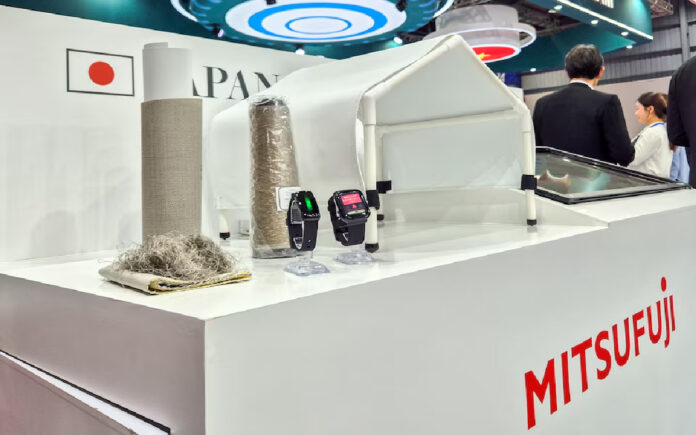Tokyo: Kyoto-based Mitsufuji, which originally specialized in weaving decorative belts for kimonos, may soon be producing high-tech fibers to shield fighter jets from electromagnetic interference. The company, now focused on consumer wearable gadgets, is among a growing number of small Japanese firms that are increasingly on the government’s radar as it seeks dual-use technologies to enhance its military capabilities.
This initiative is part of Japan’s ambitious 43 trillion yen ($275 billion) military expansion strategy launched in 2022, aimed at addressing rising security concerns from China, Russia, and North Korea. However, Japan faces an uphill battle. Unlike allies such as the U.S., with defense giants like Lockheed Martin, and the UK, with BAE Systems, Japan does not have a dominant defense industry. Even Mitsubishi Heavy Industries, Japan’s leading defense contractor, generates less than a fifth of its revenue from military equipment.
To overcome this gap, Japan’s Self-Defense Forces (SDF) are courting smaller companies to explore a broader range of innovative technologies. The rapidly evolving nature of modern warfare, especially the use of small drones in Russia’s invasion of Ukraine, has further underscored the need for cutting-edge solutions.
Former defense minister Minoru Kihara emphasized Japan’s need to stay competitive. “If we don’t pioneer on our own, we won’t be able to keep up with global trends,” he said. “Japan should invest in research and development that contributes to national security, including dual-use technologies, without fear of failure.”
In late 2023, Japan began holding multi-company meetings to discover innovative products and technologies that could serve both civilian and military needs. Mitsufuji, already supplying wristbands to the SDF to monitor heat stroke risk, participated in one such meeting. CEO Ayumu Mitera explained, “We don’t know what the needs are, so we basically showed them what we have. It’s not that we have a desire to enter the defense business, but if there’s demand, we’re happy to make proposals.”
One such proposal involved using Mitsufuji’s highly conductive silver-metallised fiber to create a prototype hangar tent designed to shield military aircraft from electromagnetic interference. In other cases, the government has struck deals with small businesses. The Air Self-Defense Force (ASDF) acquired powered exoskeleton “muscle suits” from Tokyo-based startup Innophys and trialed wind measuring instruments from Kyoto’s Metro Weather.
Also Read | $1.5 Billion Amazon Protection Initiative Launched at Davos
Kazuhisa Shimada, a former vice defense minister, emphasized the role of government involvement in fostering dual-use technologies. “I don’t think matching dual-use technologies with national security can be achieved unless the government plays an active role and does not simply wait for companies to come to it,” he said.
The ASDF, in particular, has been proactive, engaging with around 300 companies in 2023 alone to support its space operations. Colonel Ryoji Kondo, a former F-2 fighter jet pilot, stated, “Times have changed. We really need to get help from startups.” His team is in talks with CollaboGate Japan and Wyvern, two startups working on space technology.
Also Read | South Korea’s Birthrate on Track to Rise for the First Time in Nine Years
The Japanese government is also assisting smaller firms by facilitating their participation in international defense exhibitions, where they can showcase their innovations. Mitsufuji, for instance, presented its technologies at the Vietnam Defense Expo last month. The company has since secured deals to supply its high-tech fiber to firms in both Asia and Europe.
Building these bridges with foreign partners not only strengthens Japan’s defense capabilities but also fosters stronger security ties with allied nations. Kihara noted, “Even if it doesn’t go as far as using the same technology or equipment, using the same parts will strengthen cooperation between nations, in terms of security.”



